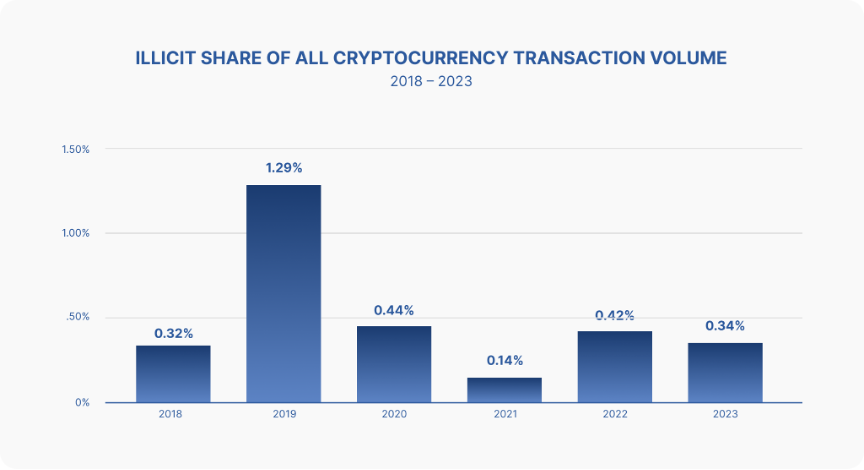Last updated:
 Why Trust Cryptonews
Why Trust Cryptonews

A report published by CryptoISAC and Merkle Science on Wednesday reveals that despite the rise of cryptocurrencies, cash remains the top choice for criminals in illicit finance.
The findings show that only 0.34% of crypto transactions in 2023 were flagged as potentially linked to illicit finance.
The “Blockchain’s Role in Mitigating Illicit Finance“ report compares this figure with the estimated 2% to 5% of global GDP laundered annually through traditional financial systems, amounting to as much as $2 trillion.
The big contrast highlights that while crypto attracts substantial scrutiny, traditional financial systems continue to pose a much larger threat in terms of illicit finance.
Illicit Finance: Criminals Still Prefer Cash Over Crypto
Robert Whitaker, director of law enforcement affairs at Merkle Science, noted that U.S. crypto exchanges must comply with strict know-your-customer (KYC) and anti-money laundering (AML) regulations.
“It’s law enforcement friendly, with a public, immutable ledger behind it,” Whitaker said.
These compliance measures make it easier for authorities to trace and de-anonymize illegal activity on blockchain networks.
In contrast, cash transactions are far harder to track, making them the preferred method for criminal activities.
Global Cooperation Needed to Tackle Illicit Finance
The report also highlighted that stablecoins, often suspected of being used for illicit finance, showed very low levels of suspicious activity.

From July 2021 to June 2024, only 0.61% of Tether’s USDT and 0.22% of Circle’s USDC transactions were flagged as potentially illicit.
Despite this, the report urges continued international cooperation to address illicit crypto activities, especially as many offshore exchanges operate beyond the reach of U.S. regulations.
The U.S. Treasury’s 2024 risk assessment found that virtual assets remain a smaller threat to money laundering than fiat currency.




